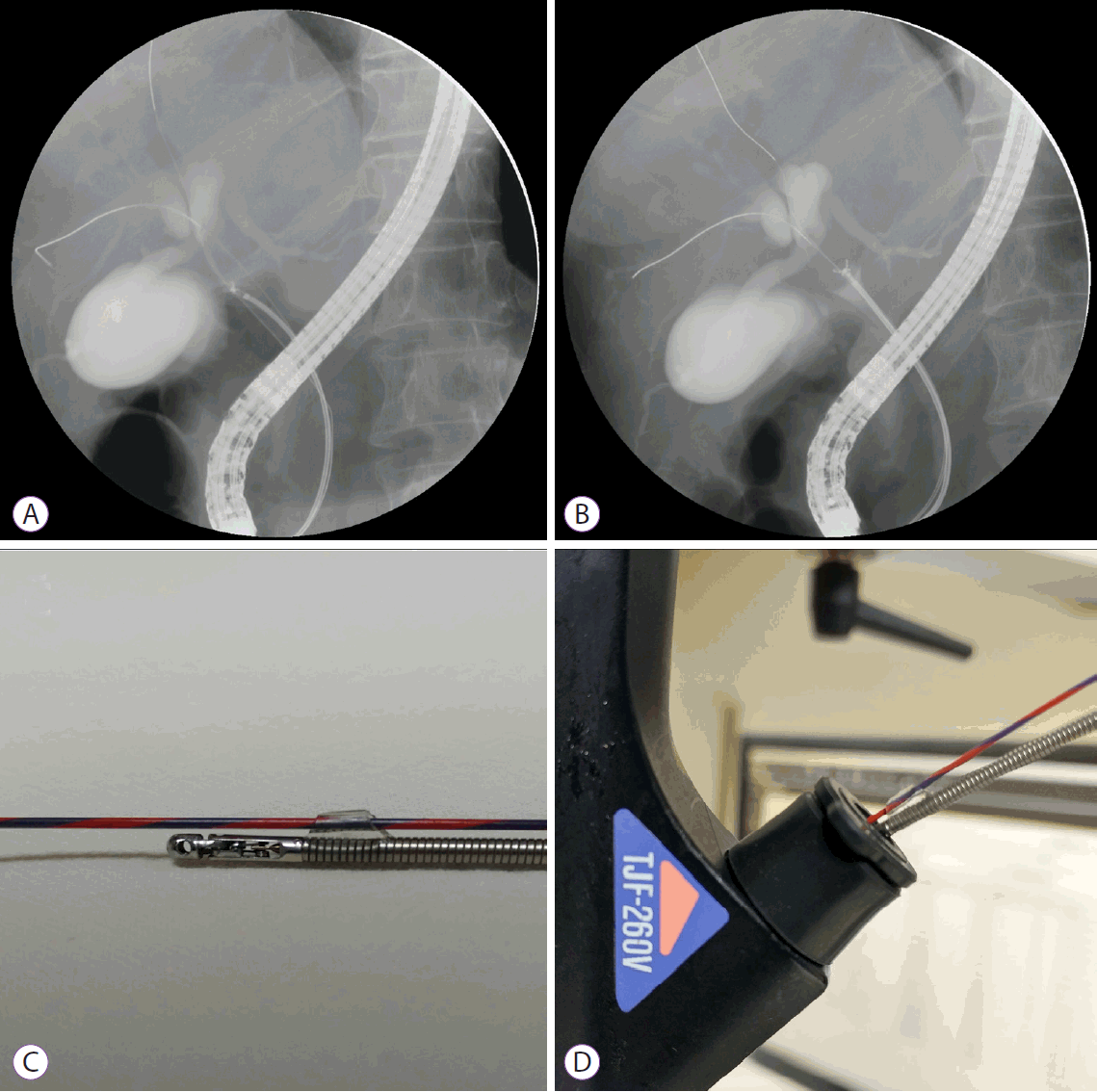Biopsy procedures for sampling of the proximal bile duct during endoscopic retrograde cholangiopancreatography (ERCP) can be technically difficult [1]. Insertion of biopsy forceps into the bile duct is not an easy task and can cause some adverse events [2-4]. In addition, controlling and positioning the forceps can be difficult during targeted sampling of a designated area. If we could easily insert biopsy forceps into the bile duct and position them at the target area, tissue sampling would not be as challenging during ERCP.
A 59-year-old woman underwent ERCP due to jaundice caused by a proximal biliary stricture that was demonstrated by abdominal computed tomography. On fluoroscopic exam, a 28-mm, ovoid filling defect was noted at the proximal bile duct. After biliary sphincterotomy, tissue biopsy was attempted using conventional forceps with a 1.8-mm diameter cup and a 2.5-mm3 cup capacity (Optimos® biopsy forceps, Taewoong Medical, Goyang, Korea). However, biopsy procedures can be technically difficult when inserting biopsy forceps into the bile duct, especially when the biopsy is targeted to the side wall of the duct (Fig. 1A). Therefore, we attached a silicone tube on the proximal shaft of the biopsy forceps (Fig. 1C). The silicone tube is a hand-made prototype, and has a small hole that permits passage of a guide-wire and easy passage of forceps into the bile duct (Fig. 1D). Using this biopsy forceps, targeted sampling from the central area of the mass was easily and successfully performed (Fig. 1B). The microscopic examination (Fig. 2) revealed fragments of well-differentiated adenocarcinoma (circle mark) with necrotic debris in the background. The guide-wire assisted method (Fig. 2B) seems superior to the conventional method (Fig. 2A) for sampling sufficient tissue.








